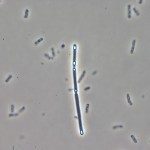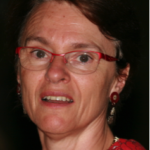Lien vers Pubmed [PMID] – 8057358
J. Mol. Biol. 1994 Aug;241(2):178-92
Transcription of the levanase operon of Bacillus subtilis is controlled by LevR, an activator of the NifA/NtrC family of regulators. An upstream activating sequence (UAS) located in a 16 bp palindromic structure has previously been characterized. LevR was overproduced in B. subtilis and interaction between the activator and the UAS was demonstrated by gel shift and footprint experiments. The LevR protein specifically binds to the two-halves of the palindromic structure centered at -125 bases upstream from the transcriptional start site. In addition, footprint analysis suggests that LevR interacts with a third DNA region located at positions -90 to -80. To investigate the function of the different domains of the LevR activator, stop codons were introduced at various positions in the levR gene. The ability of the truncated LevR polypeptides to activate transcription, to respond to the inducer or to interact with the UAS was tested. The results obtained suggest that LevR is a multidomain protein. The amino-terminal part of the protein is required for DNA binding whereas the central domain allows the activation of transcription. The carboxy-terminal region is involved in the modulation of the LevR activity by the inducer.




